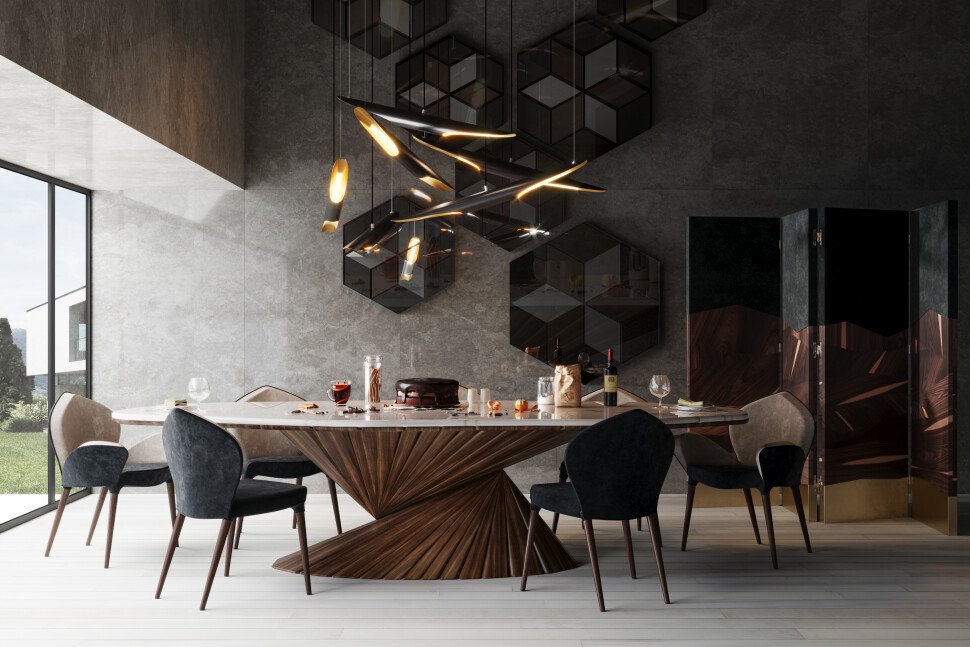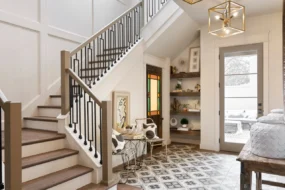
Introduction
Most people remodel with one thing in mind: how the home will look. But what if you designed your home not just for the eyes — but for all five senses?
Your home should be more than beautiful. It should be a place where you feel calm, energized, connected, and inspired — a space that delights your senses and supports your well-being. This guide explores how you can remodel to create a multi-sensory home experience, transforming your house into an environment that feels alive, immersive, and uniquely yours.
Chapter 1: Why Multi-Sensory Design Matters
A truly great home engages all of you — visually, physically, emotionally. Research shows that our sensory environment affects our mood, productivity, and health.
- Harsh lighting can raise stress levels.
- Poor acoustics can make a space feel chaotic.
- Synthetic smells can trigger fatigue or headaches.
By designing with sight, sound, smell, touch, and even taste in mind, you create a home that feels balanced, comfortable, and full of life.
Chapter 2: Designing for Sight — Beyond “Pretty”
Sight is the most obvious sense we design for, but a multi-sensory approach goes deeper than just picking trendy colors.
Tips to Remodel for Sight:
- Layered Lighting: Combine natural light, overhead fixtures, task lights, and accent lighting to create depth and flexibility.
- Natural Light Maximization: Add skylights, enlarge windows, or use light tunnels to bring in more daylight.
- Color Psychology: Use blues and greens for calm, yellows for energy, neutrals for grounding.
- Visual Flow: Open up sightlines so rooms connect naturally and feel expansive.
- Statement Features: Use bold artwork, textured walls, or patterned tiles to create visual anchors in each room.
Chapter 3: Designing for Sound — Creating a Sonic Sanctuary
Noise is one of the biggest stress triggers in modern life. Your remodel can actively shape the sound environment in your home.
Tips to Remodel for Sound:
- Acoustic Panels: Perfect for living rooms, home theaters, and open-concept spaces to absorb echo.
- Soft Materials: Rugs, curtains, and upholstered furniture help quiet a room.
- Water Features: A small indoor fountain or outdoor water wall creates soothing white noise.
- Soundproofing: Add insulation to shared walls, install solid-core doors, and seal window gaps to block outdoor noise.
- Sound Zones: Use smart speakers or sound systems to control music in different rooms independently.
Chapter 4: Designing for Smell — A Fresh Approach
Scent is closely linked to memory and emotion. The right remodeling choices can keep your home smelling clean, fresh, and inviting.
Tips to Remodel for Smell:
- Ventilation Upgrades: Install range hoods, add exhaust fans, and consider air exchangers for better airflow.
- Natural Materials: Choose low-VOC paints, wood finishes, and flooring that don’t off-gas harmful chemicals.
- Herb Walls or Gardens: Build a small vertical herb garden in the kitchen — functional and fragrant.
- Aromatherapy Zones: Incorporate spaces for diffusers or candles in living and bath areas.
- Hidden Storage: Reduce clutter that can trap odors by adding built-in cabinetry.
Chapter 5: Designing for Touch — Textures That Speak
Touch is an often-overlooked sense in remodeling, but it has a powerful effect on how cozy or luxurious a home feels.
Tips to Remodel for Touch:
- Mix Textures: Combine smooth stone counters with rough brick walls, soft rugs with cool metal accents.
- Ergonomic Choices: Install rounded edges on counters and furniture to make movement safer and more pleasant.
- Temperature Control: Heated bathroom floors or warm wood underfoot can completely change your experience.
- Tactile Features: Add wainscoting, carved trim, or natural wood beams to create touchable interest.
Chapter 6: Designing for Taste — Culinary-Centered Remodeling
Taste may not seem like a design element — but think about how much life happens around food. Remodeling with taste in mind means designing kitchens and dining areas that make cooking and eating a joy.
Tips to Remodel for Taste:
- Open Kitchen Layouts: Encourage interaction while cooking and dining.
- Dedicated Pantry Space: A well-organized pantry makes cooking easier and more inspiring.
- Chef-Level Appliances: Upgrade stoves, ovens, and fridges to elevate everyday meals.
- Outdoor Kitchens: Extend dining beyond the walls for fresh-air experiences.
- Mood Dining: Install dimmable lighting and warm-toned fixtures for cozy dinners.
Chapter 7: Combining the Senses — The Real Magic
A truly powerful remodel doesn’t just focus on one sense — it blends them.
- Pair soft lighting with calming scents for a spa-like bathroom.
- Use textured walls and warm lighting in a reading nook.
- Add music control and dimmable lights in dining areas for dinner parties.
The key is balance — avoid overwhelming any one sense, and aim for harmony.
Chapter 8: Budget-Friendly Multi-Sensory Ideas
You don’t need a full-scale renovation to create a sensory-rich home. Here are quick wins:
- Smart bulbs for instant lighting control
- Scent diffusers or fresh flowers for natural fragrance
- Washable rugs and curtains to soften sound
- Accent wall with peel-and-stick textured panels
- Countertop herb planters for fresh flavor
Conclusion
Remodeling isn’t just about making your house look nice — it’s about making it feel alive. By designing for all five senses, you create a home that nourishes your body, mind, and spirit. Whether you’re doing a full renovation or small upgrades, a multi-sensory approach ensures that every corner of your home feels intentional, welcoming, and unforgettable.








